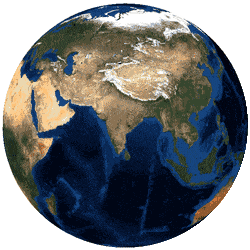
Digital Twin Sandbox
Have you always wanted to test your machine learning algorithm at the global scale but lacked a clean, cloudless dataset? Now we are offering you one, openly available. And it looks beautiful.
Build just about any global scale application with the publicly available, harmonized yearly stack of data. The 120-meter resolution data is free of clouds and free of most of the remote sensing complexity, making the collection easy to use regardless if you're an expert building large-scale machine learning models, or just an enthusiast observing global phenomena.
Read more
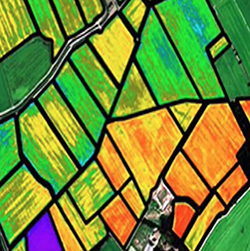
Deep Learning Approach for Crop Type Mapping
GEM takes advantage of the large volumes of available EO, weather, climate and other non- EO data to establish economically viable continuous monitoring of the Earth. As part of GEM, the development of scalable and cost-effective solutions is being tested on various use-cases, which include also crop identification.
Read more about this in our article A Deep Learning Approach for Crop Type Mapping Based on Combined Time Series of Satellite and Weather Data.
Watch our presentation!
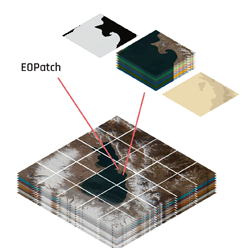
eo-grow - Earth Observation Framework for Scaled-up processing in Python
Analysing EO data is a complex process, and solutions often require custom tailored algorithms. On top of that, in the EO domain most problems come with an additional challenge: How can the solution be applied on a large scale?
Within the GEM project we have updated and extended eo-learn with additional functionalities that allow for new approaches to scalable and cost-effective Earth Observation data processing. We have tied it with the Sentinel Hub’s unified main data interface (Process API), the Data Cube processing engine for constructing analysis-ready adjustable data cubes using Batch Process API, and, finally, the Statistical API and Batch Statistical API to streamline access to spatio-temporally aggregated satellite data.
As part of GEM processing framework, we have built eo-grow which facilitates extraction of valuable information from satellite imagery. eo-grow tackles the issues of scalability by enabling coordination of clusters to run the EO workflows over large areas using Ray. eo-grow library has been publicly released on GitHub.
See also our poster for more details.
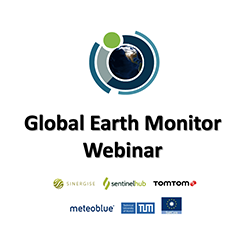
GEM webinar: Outcome Presentation and Hands-on Sessions
We're pleased to make available the recordings of our Global Earth Monitor project (GEM) webinar held live on 14 February 2023. The various stakeholders from the Earth Observation field and beyond presented the results of the project (with a particular focus on the use cases results). The morning session provided a good overview of the project, while the afternoon sessions focused on the guided exercises to show GEM outcomes and use of the developed tools.
See the GEM webinar recordings here.
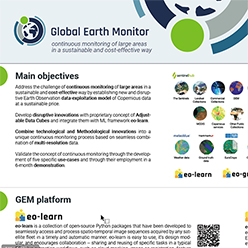
GEM at the Living Planet Symposium 2022
It was a pleasure to participate in the European Space Agency’s Living Planet Symposium in Bonn, Germany in 23-27 May 2022. GEM was presented during the poster session on the third day. The Symposium with more than 4,700 registered atendees was a great opportunity to highlight the project's objectives, platform and use cases.
See the GEM poster here and the LPS22 page for more information.
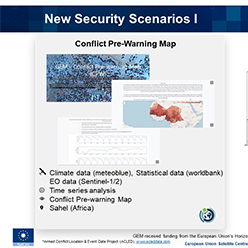
GEM at the International Geoscience and Remote Sensing Symposium 2022
On 20 July 2022, GEM was presented at IGARSS 2022 which is the flagship conference of the IEEE Geoscience and Remote Sensing (RS) Society GRSS and is aimed at providing a platform for sharing knowledge and experience on recent developments and advancements in geoscience and RS technologies, particularly in the context of Earth Observation (EO), disaster monitoring and risk assessment. GEM was presented in the “Addressing New Security scenarios with Big EO data” session: with the New Security concept, the paradigm of Security as isolated domain changes to a complex, inter-domain one. Climate Security issues are tackled in the Conflict Pre-Warning Map pilot within GEM: SatCen presentation from Michele Lazzarini entitled "New Scenarios shaping a Digital Twin Earth for Security" highlighted the contribution of GEM in shaping a Digital Twin Earth for Security, using heterogeneous data sources and machine learning techniques.
See the presentation here.









